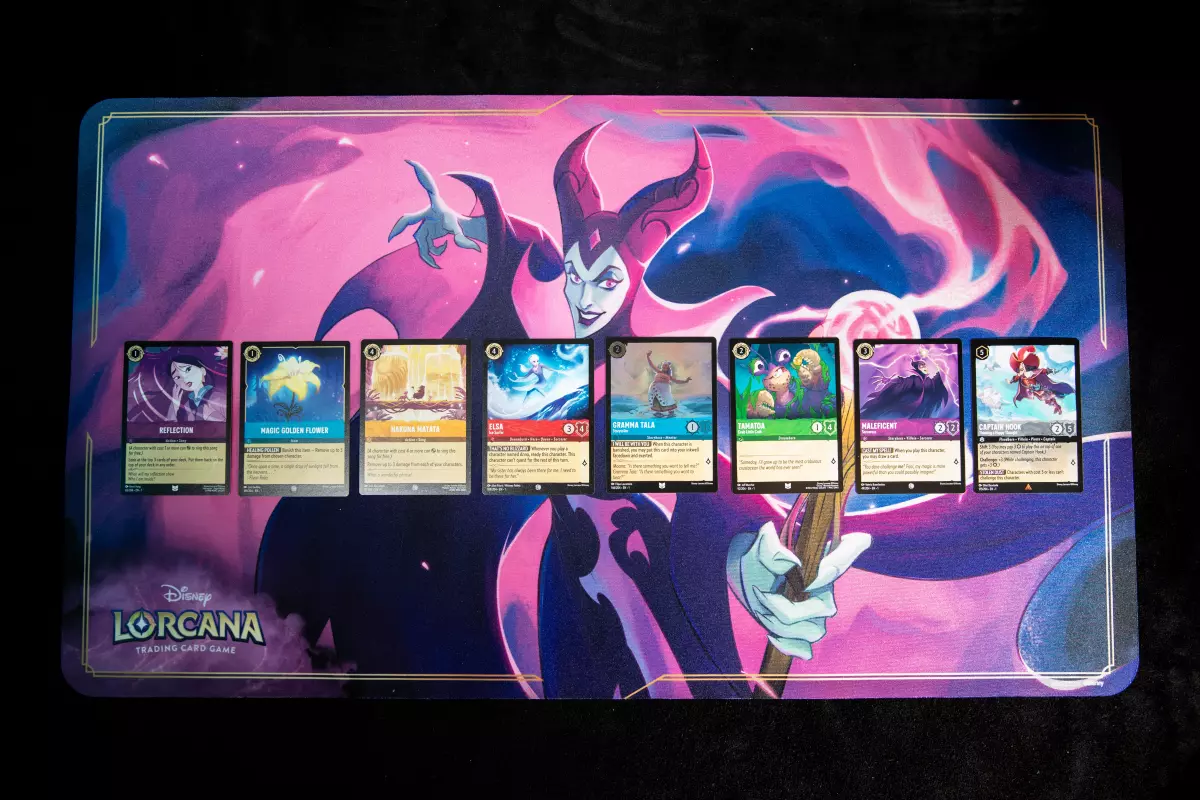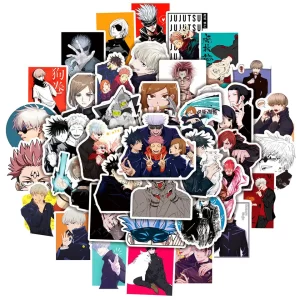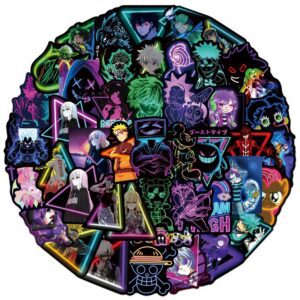When Ryan Miller first played “Magic: The Gathering,” he was instantly captivated. It didn’t take long for the Bakersfield teenager to start designing his own collectible card games. However, his initial attempts were far from successful.
“Magic introduced this new style of game,” Miller recalls of the game’s release in 1993. “I felt compelled to try it out.”
Armed with 3-by-5 notecards, which he cut in half, Miller embarked on the journey of creating his own characters for a dueling swordplay game. “I was attempting to create a fighting game, but my brother eventually stopped playing. He said, ‘The game will never end, dude.’ It was too easy to block attacks, and to me, that felt like real sword fighting – parrying! But in the end, there was no forward progression. That was my first lesson. This type of game is really hard to design.”
Today, Ryan Miller, who now oversees Disney Lorcana TCG development at Ravensburger, is a veteran in game design. His path to this role was not straightforward and included a stint as a prison guard. Nevertheless, he is currently leading the launch of what is being hailed as the most anticipated collectible card game in years. “Disney Lorcana” is poised to join the ranks of iconic titles like “Magic: The Gathering” and “The Pokémon Trading Card Game.”
“Disney Lorcana” was released earlier this month at select hobby shops and is set for a wider release in early September. Despite facing some legal controversies, it has already garnered a devoted following, with fans lining up for hours at game conventions to obtain products and promotional cards. “Lorcana” taps into Disney’s rich animation history, where players use cards to accumulate ink, which can conjure images of beloved characters, objects, and songs, all in pursuit of what the game defines as “lore.”
Additionally, “Lorcana” marks the debut collectible card game from Ravensburger, a renowned tabletop game company known among Disney fans for its “Villainous” board game line. “Lorcana” features both familiar and unexpected characters and objects, such as Anna and Elsa from “Frozen” battling Sergeant Tibbs from “101 Dalmatians” and various incarnations of Mickey Mouse. The game combines nostalgia with innovative gameplay, with cards referencing iconic Disney weapons (like a frying pan) and famous songs (“Hakuna Matata,” “Friends on the Other Side”).
For Ryan Miller, “Disney Lorcana” represents a lifelong quest to merge the impressionistic storytelling of collectible card games with fast-paced, accessible gameplay. Miller remarks, “Card games possess a certain level of abstraction. They allow players to experience unfolding stories. In ‘Lorcana,’ one of my favorite mechanics is the song mechanic. It enables a character to sing, adding a small scene to the game. When two characters face off, perhaps they’re not fighting, but rather arguing. The beauty of this abstraction is that it allows players to bridge that gap themselves.”
For the gaming industry, “Disney Lorcana” is seen as a potential blockbuster. James Zahn, the editor-in-chief of the Toy Book, states, “The launch of ‘Disney Lorcana’ is undoubtedly the most highly anticipated customizable trading card game launch we’ve witnessed in years. Established game platforms like “Magic: The Gathering” and “The Pokémon Trading Card Game” predominate this market, but “Lorcana” has the potential to appeal to both seasoned players who enjoy customizable gameplay and untapped Disney fan communities.
Despite a lawsuit attempting to halt its release, “Lorcana” has made its way to the market. Upper Deck, a trading card and game company, sued Ravensburger earlier this summer, claiming that Miller, while under a work-for-hire contract with Upper Deck, developed the game that would become “Lorcana.” The breach of contract suit alleges that an Upper Deck game bears “remarkable, uncanny similarities” to “Lorcana.” However, Miller, the co-designer of “Lorcana” with Steve Warner, chose not to comment on the lawsuit.
Ravensburger has sought the dismissal of the case, asserting that their team’s integrity and product originality remain unquestionable. Attorney Zachary Strebeck, who specializes in the gaming industry, explains that game mechanics are generally not protectable under copyright law, as they constitute rules and processes rather than creative works like songs or paintings. Therefore, Upper Deck is pursuing a breach of contract and fiduciary duty case. The company declined to provide further comments to the media.
Nonetheless, the high-profile nature of “Lorcana” has drawn significant attention to the lawsuit, though it has not dampened the excitement for the game. Filip Francke, Ravensburger’s global head of games, emphasizes that the company has remained focused on the project, saying, “Throughout this time, we have tried to keep our eyes on the ball – following our plan. We didn’t want to get distracted by anything, be it lawsuits or other matters.”
Ryan Miller appears undeterred by the allegations. He eagerly demonstrates the game and discusses how “Lorcana” delves into Disney’s extensive animation library. The cards in the game, for example, highlight different aspects of Princess Aurora’s personality from “Sleeping Beauty,” or reference obscure Disney elements like the tabard from Mickey Mouse’s “The Three Musketeers.” Miller reveals that “Lorcana” aims to encompass anything from Disney animated shorts and films, and Ravensburger has outlined a roadmap for “Lorcana” spanning over a decade.
The challenge was to create a game that allowed players to interact with as many cards as they desired. Miller wanted “Lorcana” to cater to players who desired a princess-themed deck while maintaining a cohesive and family-friendly game experience. Many experiments were conducted and discarded during development, including one version that resembled a “coding game” and another emphasizing a good-versus-evil concept.
Miller joined the project approximately six months in and spent another six months refining the gameplay loop. Subsequently, three years were dedicated to iterating based on the various actions cards could inspire. “Lorcana” may feel familiar to players of “Magic” at times, but its Disney animation focus introduces a friendlier and occasionally whimsical tone. The game features a mix of swords and sorcery, courtesy of Disney’s extensive fantasy material, alongside cards featuring coconuts and songs like “Be Our Guest.”
Miller reflects, “When innovating trading card game rules, we excite dedicated trading card gamers, but we risk alienating newcomers. If we play it too safe, the trading card gamers may feel it’s not for them. It took us a long time to find the right balance – to create something that’s inviting and strategically engaging for trading card gamers. The trading card platform provides the framework, and the game design is like the foundation of a house. It needs to support a beautiful roof, walls, and furnishings. The frame can be welcoming, but the strategic depth comes from how you decorate it – that’s where the cards come in.”
The heroes-versus-villains concept, though ultimately abandoned, would have aligned well with Ravensburger’s Disney tabletop game, “Villainous,” which has already sold over a million copies globally. However, while “Lorcana” marked Ravensburger’s entry into the collectible trading card market, Filip Francke suggests that the company drew lessons from “Villainous.” He notes that keeping the game simple was essential, saying, “In ‘Villainous,’ you play as a specific character, striving to commit evil deeds, while simultaneously opposing your opponent as the good guy. It was crucial to ensure players understood the game’s essence. The Disney license makes it feel familiar to those who haven’t played such games before, which enhances accessibility. However, we realized ‘Lorcana’ turned out to be slightly more complex than we initially intended. For newcomers, it can be a bit challenging to get into.”
Ryan Miller’s journey to game design began during his time as a member of the military in the late ’90s. Although he initially aimed for a career in law enforcement, he decided to pursue game design, inspired by his passion for “Magic” and other trading card games. “I was a prison guard at Fort Leavenworth,” Miller recalls. “That job was 98% boring and 2% terrifying. Even then, I had notebooks filled with ‘Magic’ deck ideas and my own concepts for trading card games.”
One of Miller’s creations, the “Warhammer 40K” trading card game co-designed with Luke Peterschmidt in 2001, has its roots in that era. “The foundation of that game can be traced back to those mid-’90s notebooks. I loved ‘Warhammer 40K,’ but as a soldier, I couldn’t afford the miniatures. As I developed ideas, I became increasingly excited about game design. While my goal was to work in military police, as I left the Army, I decided to take a shot at game design and moved to Seattle, where Wizards of the Coast was based.”
Since then, Miller has remained in the game industry. Reflecting on his game design philosophy, he acknowledges that “Lorcana” brings his career full circle. His earliest memories of play are linked to Disneyland Park in Anaheim. Miller says, “Growing up in Bakersfield, on the modest side, my grandmother would occasionally take me to Disneyland. Immersion is what I experienced most at Disneyland. You step onto Main Street, U.S.A., and you’re transported. You turn left, and you’re in Adventureland, suddenly in a jungle. It impressed upon me the power of immersion.”
These lessons from Disneyland influenced Miller when he discovered hobby games. “That’s one of the reasons I was drawn to gaming. The idea of immersive decision-making, putting myself in the shoes of a character in that world, played a significant role in my entry into gaming. You can immerse someone through the environment and the types of decisions they have to make. Suddenly, I’m making decisions that a dungeon-dwelling sword wielder might make, or a pilot of a 40-foot-tall walking robot. In the world of ‘Lorcana,’ it’s about deciding when to play Maleficent or conjure a romantic ballad.”













